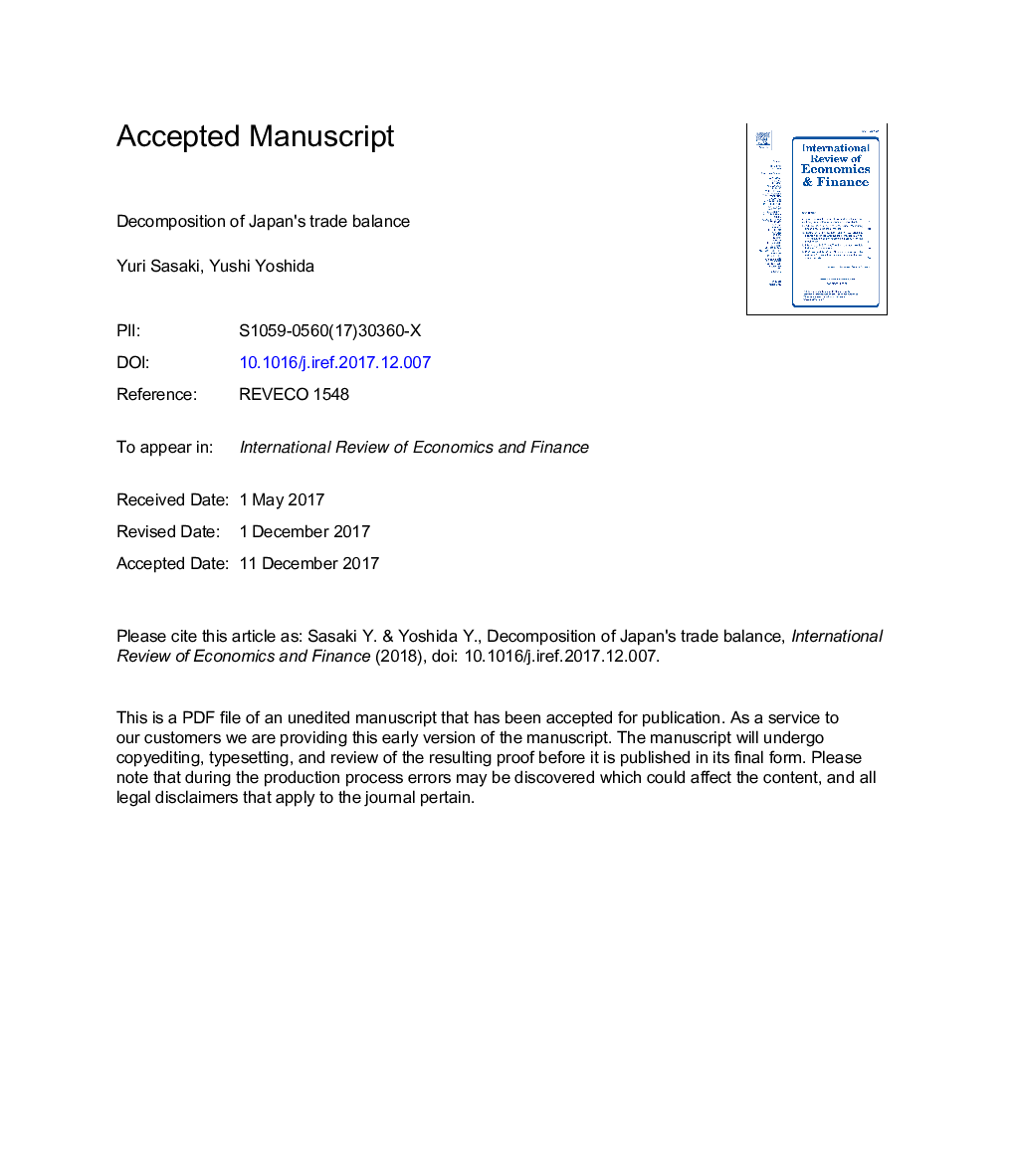| کد مقاله | کد نشریه | سال انتشار | مقاله انگلیسی | نسخه تمام متن |
|---|---|---|---|---|
| 7355459 | 1477786 | 2018 | 60 صفحه PDF | دانلود رایگان |
عنوان انگلیسی مقاله ISI
Decomposition of Japan's trade balance
ترجمه فارسی عنوان
تجزیه تراز تجاری ژاپن
دانلود مقاله + سفارش ترجمه
دانلود مقاله ISI انگلیسی
رایگان برای ایرانیان
کلمات کلیدی
موضوعات مرتبط
علوم انسانی و اجتماعی
اقتصاد، اقتصادسنجی و امور مالی
اقتصاد و اقتصادسنجی
چکیده انگلیسی
Hit by the global financial crisis and a great earthquake followed by a tsunami, Japan's trade balance has turned to deficit, ending its 26 years of trade surplus. However, it is puzzling that Japan's trade balance has remained long in deficit even during the sharp depreciation of the Japanese yen beginning at the end of 2012. As a contribution of this study, we provide consistently constructed indices for price and quantity, decomposed at the country and industry level for Japanese exports and imports between 1988 and 2014. Income elasticity, price elasticity, and pass-through elasticity are estimated at the country and industry disaggregated levels. The estimated results support that Japanese trade experienced a structural change both in income and exchange rate pass-through elasticity. After the crisis, Japanese exports became more unresponsive to exchange rate fluctuations, whereas Japanese import prices rose more proportionately with the depreciation of the Japanese yen, and income elasticity of imports rose sharply. The difference in income elasticity between Japan and the rest of world is reminiscent of the Houthakker-Magee effect and suggests that the trade balance of Japan is likely to deteriorate. The decomposition of Japanese trade revealed that almost every element shifted, resulting in the deterioration of the external balance.
ناشر
Database: Elsevier - ScienceDirect (ساینس دایرکت)
Journal: International Review of Economics & Finance - Volume 56, July 2018, Pages 507-537
Journal: International Review of Economics & Finance - Volume 56, July 2018, Pages 507-537
نویسندگان
Yuri Sasaki, Yushi Yoshida,
